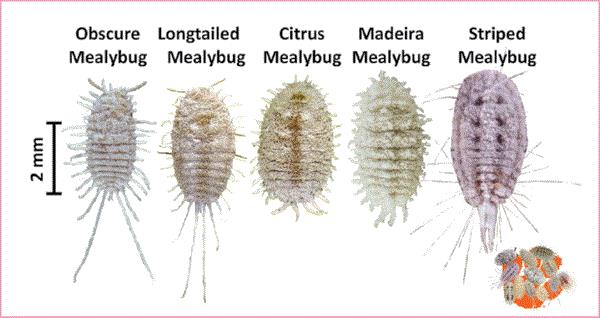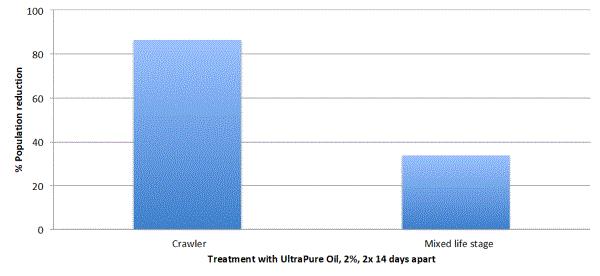Corteva Announces a Re-org
Corteva Agriscience announced last Wednesday that it’s splitting its seed and pesticide businesses into different listed companies. The pesticide business will retain the name Corteva. The seed business will be called SpinCo.
Some of y’all probably remember that DuPont and Dow, two giants in the chemical industry, merged in 2011. Corteva AgriScience spun off from DowDuPont in 2019. And now Corteva AgriScience is splitting into smaller units. The deal won’t be finalized until the second half of 2026. Once the split has been completed, Greg Page, the current chairman of Corteva AgriScience, will lead the new Corteva. Chuck Magro, the current CEO, will lead SpinCo.
The future headquarters of the two companies haven’t been clearly identified. It’s likely that SpinCo will place its headquarters in Johnston, Iowa, where Corteva AgriScience’s seed division is based. I guess you can say that SpinCo is going back to its Pioneer Hi-Bred roots. The new Corteva will likely stay put in Indianapolis, where it moved to in 2022.

Corteva AgriScience's headquarters in Indianapolis (left) and the seed division's headquarters in Johnston (right). (Photo credit: Matt Kryger/Indianopolis Star and Corteva AgriScience.)
How’s the split going to impact the availability of some of the best-known products in the ornamental market, such as Conserve, Gallery, Snapshot and XXpire? Likely no impact because Corteva isn’t going away. It isn’t clear at this time if Corteva will sell off some of its pesticides as it consolidates operation. According to Reuters, the new Corteva will be responsible for settling environmental claims, including pollution linked to PFAS or “forever chemicals.”
The reasons given behind the split are to allow the two businesses to play to their strengths in different markets and to maximize value for clients, consumers, employees and shareholders over the long term.
Chuck Magro noted, “At new Corteva, success will be built upon an optimized supply chain, a new level of operational excellence and the ability to invest in the next generation of sustainable, differentiated innovation, including biologicals and other nature-based products.”

A Survey on Mealybugs
Zee Ahmed, the turf and ornamental entomologist at Clemson University, and his Ph.D. student Peilin Tan have put together a survey on mealybugs. This nine-question survey, which is designed to figure out which are the most common mealybug species in greenhouse ornamentals and what folks are doing about them, is the first step in Peilin’s Ph.D. program on mealybug taxonomy and management.
I would like to ask for your help in completing the survey by going HERE. Y’all can get this survey done in less than one minute and you don’t have to provide any personal or business information.
This survey came to my attention when Peilin gave a talk on the preliminary results of the survey at the South Carolina Entomological Society meeting last week. Peilin had my ear when he mentioned mealybugs. Those who've known me for a while know how much I love mealybugs. (I even said so in a 2018 GrowerTalk article on mealybugs.)

Mealybug species most commonly found on ornamental plants. (Photo credit: Zee Ahmed and Peilin Tan, Clemon University.)
Back to the survey. Peilin reported in his talk that the most common mealybug species identified by the survey respondents are (in the order of prevalence) longtailed mealybug, striped mealybug, citrus mealybug and Madeira mealybug. (See the lineup above if you don’t know what they look like.)
The prevalence ranking reported by Peilin is different from what I’ve personally observed in greenhouses. Peilin’s preliminary conclusion was based on about 30-plus responses and many respondents said that they don’t really know how to identify mealybugs. I think the conclusion may be a little different if more survey responses are submitted. Or the survey results may say I don’t know what’s going on with my favorite bugs.
So help Peilin improve his survey results or simply to prove me wrong. Take the survey by going HERE.

How Do You Control Mealybugs?
I hate to say it: Although my article was written in 2018, there hasn’t really been a significant breakthrough in mealybug management technologies since then. I wish Zee and Peilin the best as they continue to develop new management approaches and identification resources for mealybugs on ornamental plants.
While there are no revolutionary advances, there is some new information on the efficacy of products in controlling mealybugs. Here are the take-away points I outlined in the 2018 article with updates:
-
Be careful where you get your plant material. Mealybugs are often introduced with plants from external sources. Check incoming plants carefully and clean them up before moving them into your production area.
-
Drenches can be effective, but best used as preventive, particularly on crops that often get mealybugs (such as foliage and tropicals). If you already have an infestation, start with a spray and then change to drench when the mealybug population has been suppressed.
-
Spray programs should target crawlers. A population with mixed life stages will require multiple applications to suppress.

In this study, I sprayed 2% UltraPure Oil twice on a population of citrus mealybugs consisting of crawlers or very young nymphs, and on another population consisting of all life stages (adults with or without eggs, nymphs and crawlers). Results: Control efficacy was much higher against the population of crawlers, so target your spray program against crawlers and young nymphs.
-
Acephate (e.g., Orthene), acetamiprid (TriStar), bifenthrin (e.g., Talstar), buprofezin (Talus), thiamethoxam (Flagship) and horticultural oil remain the most effective products against mealybugs. Additional data from a limited set of studies suggest that afidopyropen (Ventigra), cyclaniliprole + flonicamid (Pradia), dinotefuran (Safari), spirotetramat (Kontos) and tolfenpyrad (Hachi-Hachi SC) can also achieve more than a 90% reduction in mealybug abundance.
-
Higher application rates and greater spray frequency achieve greater efficacy, so don’t be stingy when dealing with mealybugs.
-
Use high application volume to achieve spray coverage and mix a spreader/sticker in the spray solution. You need good spray coverage and surfactants to contact the mealybugs.
-
There are still few biological control options for mealybugs. Most predators and parasitoids available are only or most effective against citrus mealybug.

How Do You Control Broad Mites?
Ray Cloyd of Kansas State University also did a lot of research on mealybugs, as well as other pests. Joel Pesapane, interior plantscaping extraordinaire (retired), ocean watcher (active) on Isle of Palms, South Carolina, a faithful reader of this newsletter, and a sharer of knowledge and observations with me can't say enough of his interactions about his working experience with Ray.
Ray contributed an article on broad mites to the October issue of GrowerTalks. While Ray focuses on broad mites as a problem in greenhouses, I’m seeing increasing issues with broad mites in nurseries. I think the lessons Ray provided for greenhouses are applicable to nurseries.
Broad mites are different from spider mites. Well, first, they’re in different families. Broad mites and cyclamen mites are in the thread-footed mite family or Tarsonemidae. Twospotted spider mite is a spider mite or Tetranychidae. The typical symptoms of spider mite infestation are stippling and webbing. Plants infested by broad mites are often distorted (hardening, twisting, curling, cupping, etc.) and bronzing in the new leaves and terminals. These symptoms resemble nutrient deficiency, fasciation and phytotoxicity. Ray provided several pictures of broad mite damage in the article. Remember to look for the football-like eggs to confirm broad mite infestation.
Broad mites can invade a greenhouse or nursery by hitchhiking on plants, adult whiteflies, people and tools. Ray also mentioned an interesting way broad mites spread—male broad mites can carry eggs and females (nymphs and adults) to new host plants.
Ray provided a list of miticides for managing broad mites. The list is short and includes abamectin (in Avid and Sirocco), chlorfenapyr (Pylon), fenpyroximate (Akari), pyridaben (Sanmite), spiromesifen (savate) and spirotetramet (Kontos). Of course, you can also use soap and oil.
I’d add that there are a few biological control options for broad mites. Amblyseius andersoni and Neoseiulus californicus are two predatory mite species that are used to control broad mites. The potential of using Amblyseius swirskii has been evaluated, but this species is generally not recommended for broad mite management.
Remember that the damage by broad mites is permanent, so start your chemical and biological control program early to prevent damage. That means you need to scout carefully to detect infestation and damage early. Again, because damage is permanent, it may be more cost effective to remove and discard heavily damaged plants than to try to rescue them with miticides.
Go HERE to read Ray’s article on broad mites.





See y'all later!

JC Chong
Technical Development Manager at SePRO
Adjunct Professor at Clemson University
This e-mail received by 27,847 subscribers like you!
If you're interested in advertising on PestTalks contact Kim Brown ASAP!